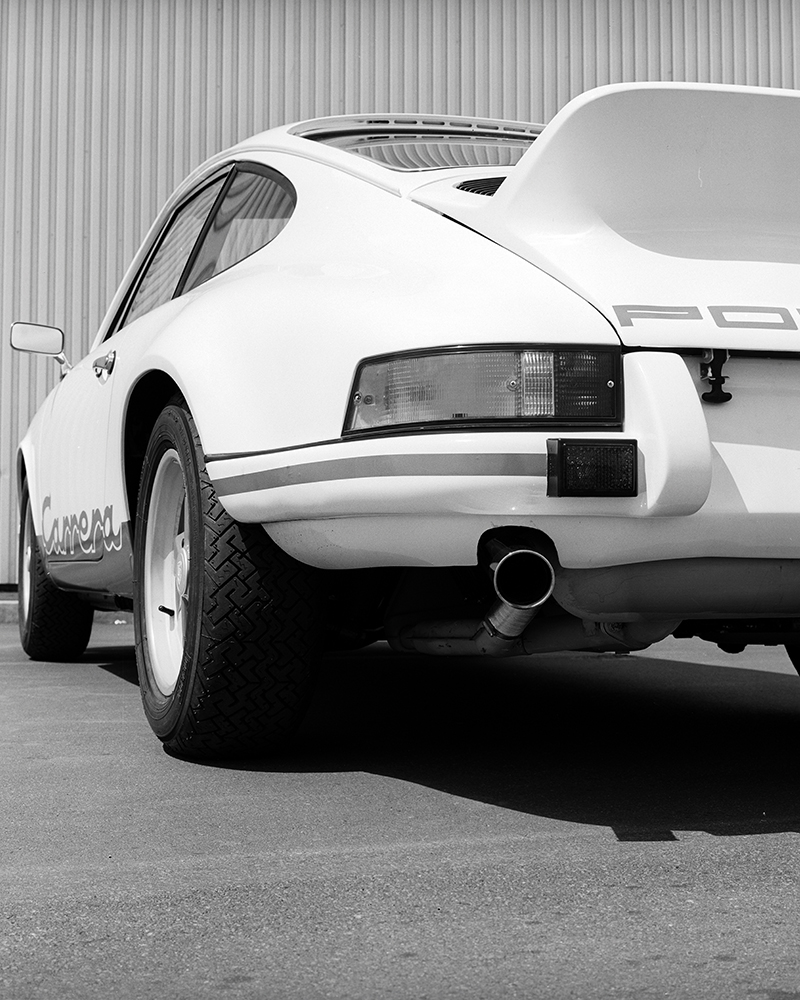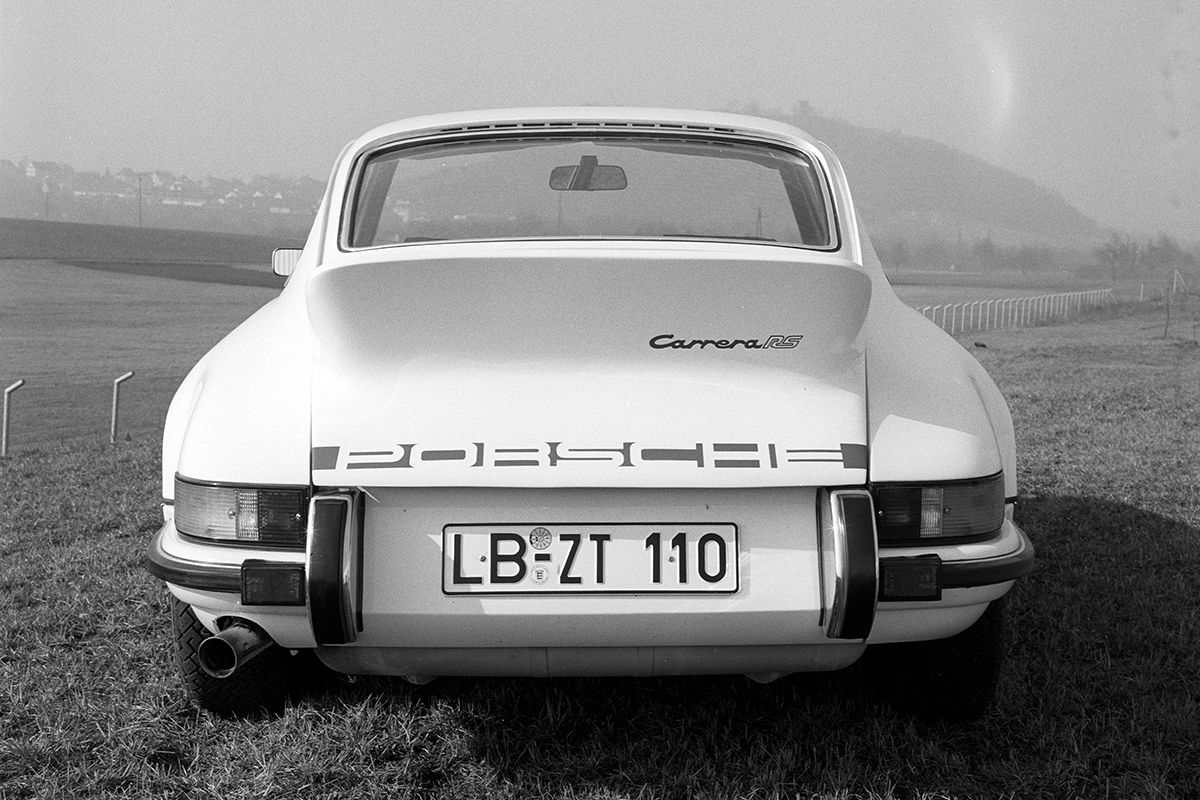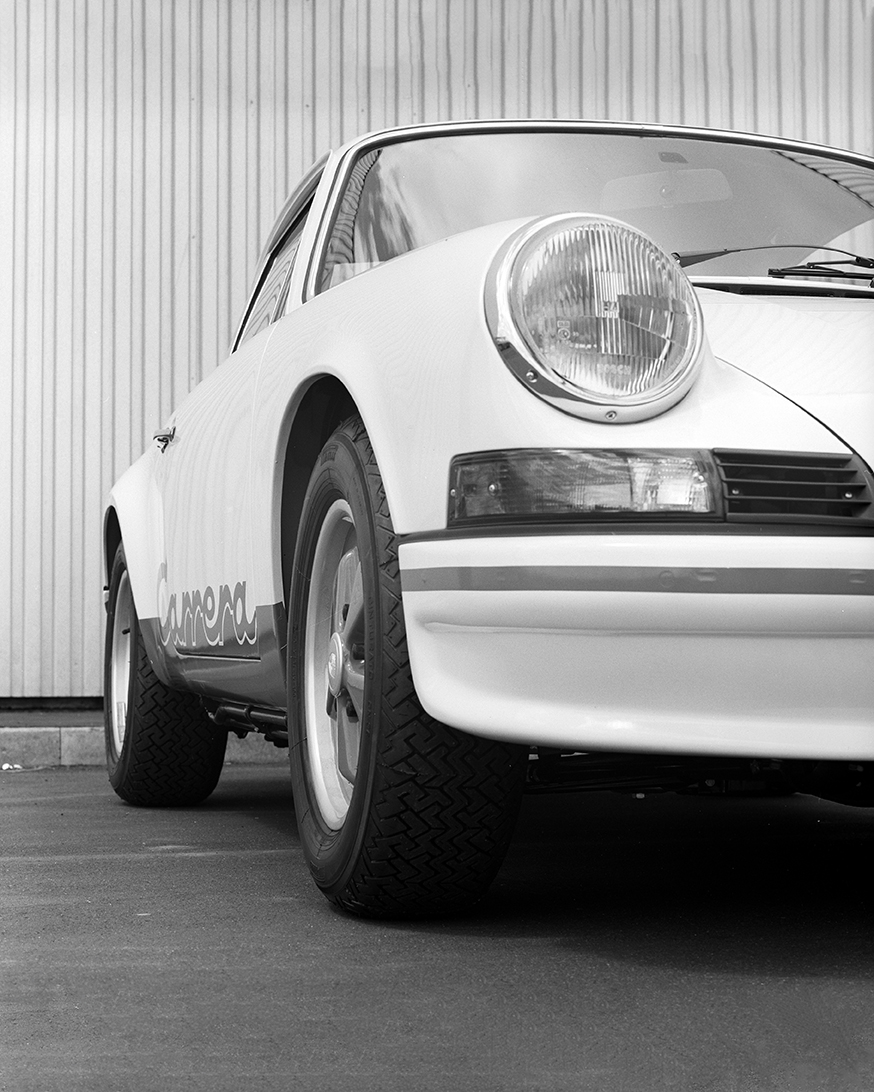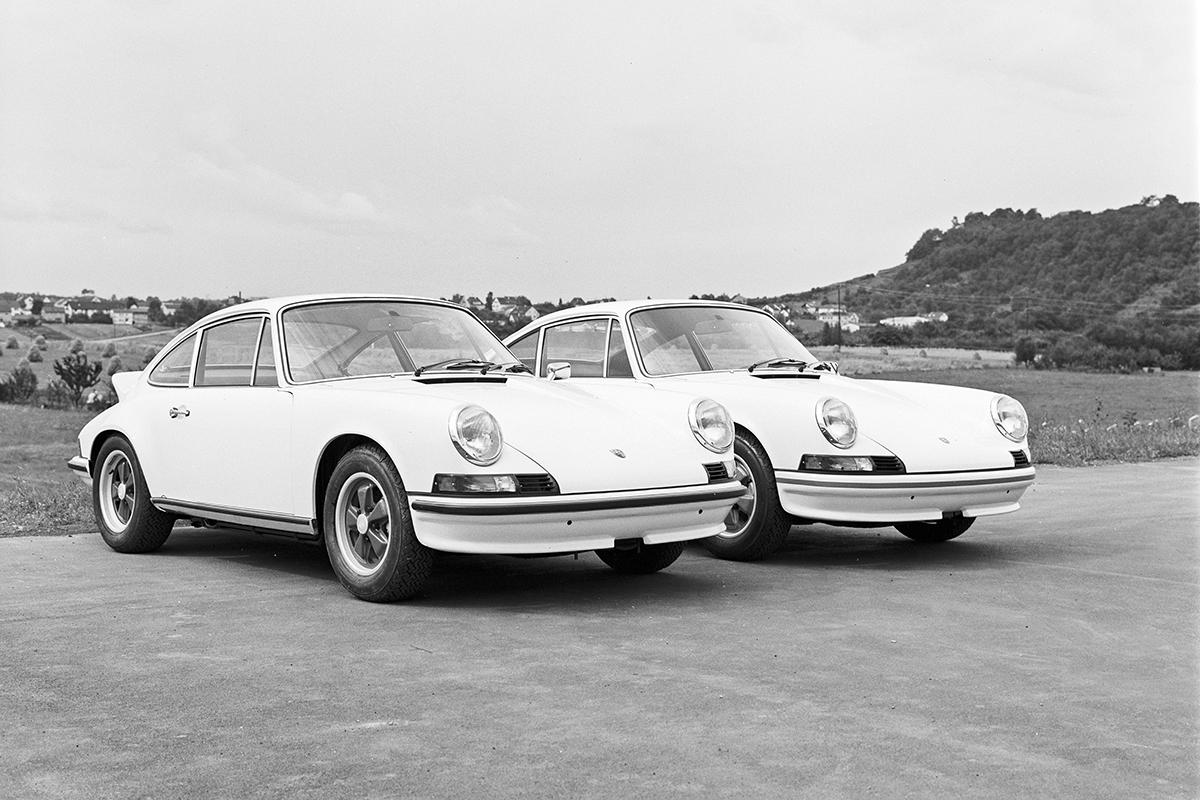“I was 26, in only my second year at the company, and I was called into the big boss’ office,” explains Tilman Brodbeck. That “big boss” was Dr Helmuth Bott, Porsche’s head of testing and development.
The reason? The 911 was being beaten in races, with the likes of BMW 1602/2002s and Ford Capris being faster through the corners. Something needed to be done about that, so Brodbeck and his supervisor, Hermann Burst, were sent away to find a solution.
They did. Brodbeck admits that inspiration came from his own car, a Fiat 850 Coupe that was also rear-engined. He had replaced his Series 1 with a Series 2 and he thought it felt significantly quicker than the modest increase of five horsepower alone could explain. As an aerodynamicist, he wondered if the revised styling with a kick in its rear lines made a difference. His colleagues said it was just a styling element, but he wasn’t entirely convinced they were right.

He held onto the idea, though, and he finally applied it to the 911 after that meeting with Dr Bott. Two and a half days later, there was a Carrera with a spoiler hastily constructed from welding wire, sheet metal and wood running around Weissach. The crude structure mounted on the 911’s engine cover earned it the nickname ‘entenbürzel’ – ‘ducktail’ – and Porsche’s staff laughed as it circulated the track.
It might have caused mirth, but it also aided stability and that improved cornering speeds. Racer Günter Steckkönig confirmed the differences on track, with notable improvements against the clock. The experimental ducktail Brodbeck had developed didn’t actually produce downforce – the understanding of which was still very much in its infancy in the early 1970s – but what it did do was reduce lift, which was instrumental in increasing the 911’s competitiveness.

The ducktail spoiler was initially considered as a package that existing 911 S customers could adopt but, elsewhere in the company, other engineers were also tasked with 911 racing developments. Most notably, Hans Mezger and Valentin Schäffer were investigating a more powerful engine with a larger capacity, their efforts resulting in a 2.7-litre flat-six which produced 210PS at 6300rpm and 255Nm of torque at 5100rpm. This engine, Brodbeck’s rear wing, a lighter body, thinner panels and glass and a review of equipment to shed weight were all combined and the Carrera RS 2.7 was born.
Turning Brodbeck’s prototype into a production-ready component was the job of the styling department, who initially balked at the aerodynamicist’s ugly addenda. The final iteration was lower than he’d built the original to avoid it reducing rear vision, but it still offered that increased stability, higher top speed and reduced drag. Crucially, it also needed to be considered safe by the regulators and there were concerns about motorcyclists hitting it from the rear. Brodbeck says the potential numbers were so small that Porsche asked the regulators: “Please shut your eyes for us”. Unusually, they did indeed turn something of a blind eye to its installation.
That wasn’t the only surprise, and Brodbeck grins when he goes on to discuss how many they eventually sold. The engineer was at the meeting where the car was first shown to the global sales staff, who were pessimistic about potential sales of such an extreme car. When asked how many they thought they could sell, the reply was just 10 – a long way short of the 500 that Porsche needed to take the new model racing.
Production went ahead regardless and the sales staff couldn’t have been more wrong. The Carrera RS 2.7 was revealed at the 1972 Paris Motor Show – with Porsche also giving the nod in advance to its most favoured customers about an exciting new 911 derivative – and it promptly sold out. Indeed, the demand was such that space had to be made in the production schedule for a further 500, then another 580.

The homologation rules were so strict that each of the first 500 Carrera RS 2.7 models were sent to be officially verified at 960kg at a weighbridge in Stuttgart to adhere to the Group 4 racing regulations. These early cars are often referred to as RSH models, the H standing for ‘Homologation’, and they were built with the thinnest panels and glass. They also lacked anti-roll bars or the wider rear wheels that would aid the RS 2.7’s stability and speed in the bends – the RS being the first 911 to feature rear tyres that were wider than the front ones.
After the weigh-in, each RSH returned to Porsche to have options fitted and either M471 Sport or M472 Touring packs added. Sport cars merely gained anti-roll bars and those wider rear wheels, but Touring models received almost all of the equipment you’d receive with a 911 S and added around 115kg of weight back on.
Only 200 cars of the entire RS run would be Sports models, with the 1308 Touring models making up the bulk of production. Some 55 were pure race cars and 17 were supplied direct to customers in that RSH specification. Later RS 2.7s didn’t need to be officially weighed and, as a result, would be built with less fastidious attention to weight-saving, often using regular production panels. All of this makes the earliest RSH cars, and RSH Sport models in particular, the most coveted among collectors.

Visually, the RS is also recognisable thanks to more than just its distinctive rear spoiler. It also gained its own unique graphics: Carrera, in celebration of the company’s previous Carrera models, and RS, for Rennsport (‘Racing Sport’ in German). The scripting was only offered in black, blue, red and green and Porsche’s somewhat unambiguous RS wore its nomenclature proudly on its lower flanks, with designer Harm Lagaay – who would go on to head Porsche’s design department – being responsible for the form and positioning of the stickers and 3M being tasked with creating them. Apparently, the RS’s iconic graphics were inspired by the trend of US manufacturers adding decals on their highest-performance models.
Needing to set up the production line for the new G-Series 911 meant that the RS 2.7’s run, while relatively prolific, was short-lived. However, its importance in Porsche’s history was established immediately, with significant wins in racing and rallying for both the RS and its RSR relation. It remains a revered car and it is still influencing Porsche’s highest-production models from the GT department.
The Carrera RS 2.7 was a car born of necessity 50 years ago and its subsequent incredible success in racing and rallying has underlined just how talented Porsche’s engineers are. It remains an undisputed icon in the model line and its direct transfer of racing technology to the road is something that has continued to this day. Even accounting for the increases in the production run, it is rare, precious and desirable. Finally, the initials ‘RS’ still signal the purest, most engaging 911s available – an impressive legacy indeed for something that started out as a much-mocked experiment in wire and wood.